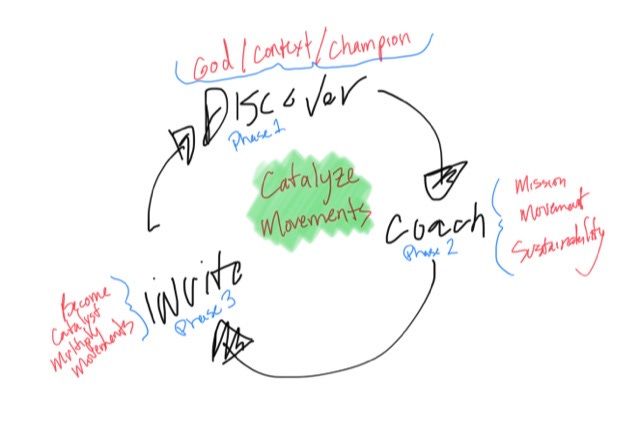
To understand catalytic work, one needs to understand the role and purpose of a catalyst. A catalyst is a word that comes from chemistry and it refers specifically to a substance that’s added to a chemical reaction in order to speed it up. The catalyst doesn’t change - it’s the same when the chemical reaction is over as when it began - even though everything around it is different after all is said and done. A real world example of this would be metal added to a car exhaust system that enables toxic fumes to be more easily converted into nontoxic gases or water; the palladium metal (the catalyst) remains after every use of the engine, ready for the next cycle and the carbon monoxide has been converted into less harmful things.
Related to missions, church planting and movements, people can step into catalytic roles that have a similar purpose. These so-called catalysts exist to facilitate the process of igniting movements but they do it in a manner that keeps them somewhat external to the movement itself and ready to work in the next movement when necessary. One (significant) aspect of their external nature means that a catalyst won’t be a movement leader; rather finding, serving and resourcing the movement leader is a primary goal. They also likely won’t even be widely known in any given movement and aren’t ever going to be the driving force of the ministry work (ie, the mission or ministry won’t revolve around them). Instead, their primary focus is on the emerging movement leaders and the immediate context in which they find themselves.
Perhaps some pieces of my story of working in East Africa will be helpful here in providing further context. I left what I was doing to pioneer and plant in that region with dreams of being at the forefront of movements. God quickly and significantly shifted my priorities though and revealed not only the potential and possibility wrapped up in catalytic work but also it’s importance to the ignition process (incidentally this was done in large part through the observation of flocking behavior and the realization that what was significant and beautiful in 100,000 starlings moving in unison wasn’t any individual starling but the totality of the picture they painted together in the sky).
Practically - this meant I still lived a life on mission though; it’s not about stepping out of the responsibility given by the great commission. I oriented what I did around movement principles and movement ideals and still _strived_to ignite movements. I prayer walked. I started discovery groups and taught others to do the same. We shared Jesus actively. But rather than intentionally planning to lead myself I focused a lot more time and energy in knowing the contexts I was involved in and finding potential indigenous movement champions to come along side and then serve and resource these leaders to lead out in their contexts.
What was crazy about East Africa is that I actually came across these indigenous movement leaders. And as I found these potential leaders my time and priorities shifted dramatically towards coaching and supporting them. Very practically it meant 2/3 of my time went directly into serving the needs of movement leaders:
- I provided focused coaching to help movement leaders overcome pressing challenges.
- I provided pertinent training based on the needs of the movement leaders and their emerging leaders and teams.
- I provided strategic input into pressing organizational needs of rapidly expanding networks.
- I provided encouragement to continue to step more fully into all that the Lord was calling them into.
At least I tried to do all of those things. I don’t think it was always perfect but I am still amazed to peer into the work in East Africa and see what happened.
Back to catalytic work though. The reality is that this work of a movement catalyst is a phased life cycle or journey. Individually, with any given movement leader, it is a singular journey of discovery , coaching and invitation. Hopefully it’s one that you’ll be able to repeat over and again and hopefully, as you engage movement leaders you can turn them into catalysts as well as they multiply movements. It’s one I aim to repeat as much as a possible. In the coming days, weeks and months I plan to dive much more deeply into these topics and the movement dynamics that surround them.
For now, consider the diagram below as a possible step into catalytic work. It’s not yet perfect or complete but hopefully we can develop it further as we move forward.
